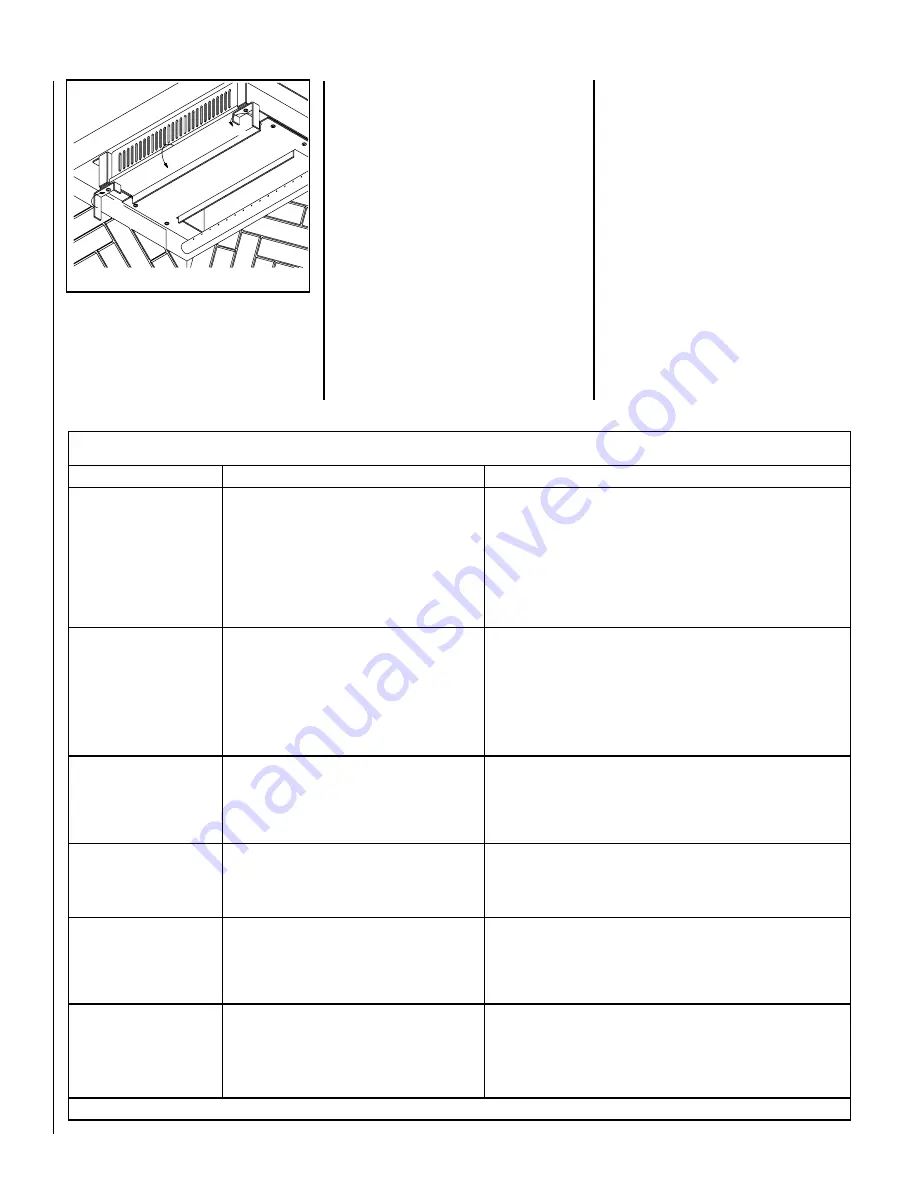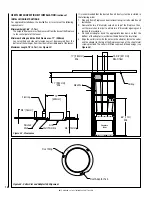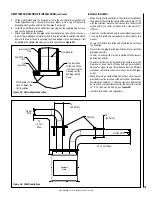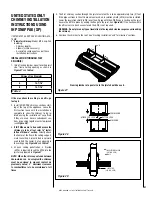
NOTE: DIAGRAMS & ILLUSTRATIONS ARE NOT TO SCALE.
8
Catalyst Troubleshooting — Problems, Causes and Solutions (see Figure 9, Page 9)
PROBLEM
POSSIBLE CAUSE
WHAT TO DO
Crumbling Substrate
(See Photo #1)
Flame impingement
Flames contacting combustor
Flame impingment
High draft
Reduce air volume to logs; don't overload wood box.
Bypass combustor when the appliance is running in high-
fire mode.
Lower flames by reducing air to logs. Use less logs in the
firebox.
Do not exceed .06" of water draft. Install a manual damper
and draft gauge or a barometric damper.
Fly-Ash Build-up
(See Photo #2)
Fly-Ash Masking
(See Photo #5)
Fly-ash Plugging
(See Photo #6)
Combustor has not maintained light-off
temperature.
Combustor has not maintained light-off
temperature.
Burning materials that produce a lot of
char and fly-ash.
Closing the bypass too soon.
Brush cold combustor with a soft bristled brush or vacuum
lightly.
Brush cold combustor with a soft bristled brush or vacuum
lightly.
Do not burn cardboard, gift wrap or garbage.
Follow instructions for proper light-off.
Thermal Cracking
(See Photo #3)
Thermal Shock
Moisture, wet logs
Uneven temperatures and heat spikes.
Burning appliance with the door open.
Burn dry, seasoned logs only.
If cracking causes large pieces to fall out, replace the
combustor.
Check appliance for air leaks.
Mechanical Cracks
(See Photo #4)
Combustor mishandled or abused.
Distortion of combustor holder.
Handle combustor with care. Replace if necessary.
Replace combustor if large pieces are missing, replace any
warped appliance parts as well.
Check appliance for air leaks.
Creosote Plugging
(See Photo #7)
Burning wet, pitchy woods or burning
large loads of small diameter wood with
the combustor in the operating position
without light-off ever occurring.
Burn dried seasoned wood. Make sure combustor has light-off
before closing the bypass damper. It may be possible to burn
the soot or creosote accumulation off by putting the combus-
tor in a partially open and partially closed position after a hot
fire has been started. Burn hardwoods.
Masking (Soot)
(See Photo #8)
Combustor has not maintained a light-off.
Burning coal will cause a sulfur-based
compound to coat the catalyst.
Place combustor in a partially open and partially closed
position after a hot fire has been started to burn off the soot
accumulation.
Revert to burning wood and fire the combustor to elevated
temperatures for one hour.
Table 1
Figure 8
ROTATE
ROTATE
ROTATE
Cleaning Procedure (see Figure 8):
1. Rotate the retainers to release the combus-
tor support plate while holding it to make
sure it does not drop.
2. Rotate the support plate and remove the
combustor.
3. Remove fly ashes on the combustor using
a soft brush.
4. Put the combustor back in place.
Catalyst Monitoring
It is important to periodically monitor the
operation of the catalytic combustor to ensure
that it is functioning properly and to determine
when it needs to be replaced. A non-functioning
combustor will result in a loss of heating ef-
ficiency, and an increase in creosote and emis-
sions. Following is a list of items that should
be checked on a periodic basis:
• Combustors should be visually inspected at
least three times during the heating season
to determine if physical degradation has
occurred. Actual removal of the combustor
is not recommended unless more detailed
inspection is warranted because of decreased
performance. If any of these conditions exists,
refer to Catalyst Troubleshooting section of
this owner's manual.
• This catalytic heater is equipped with a tem-
perature probe to monitor catalyst operation.
Properly functioning combustors typically
maintain temperatures in excess of 500°F, and
often reach temperatures in excess of 1,000°F.
If catalyst temperatures are not in excess
of 500°F, refer to Catalyst Troubleshooting
section of this owner's manual.
• You can get an indication of whether the cata-
lyst is working by comparing the amount of
smoke leaving the chimney when the smoke
is going through the combustor and catalyst
light-off has been achieved, to the amount of
smoke leaving the chimney when the smoke
is not routed through the combustor (bypass
mode).









































